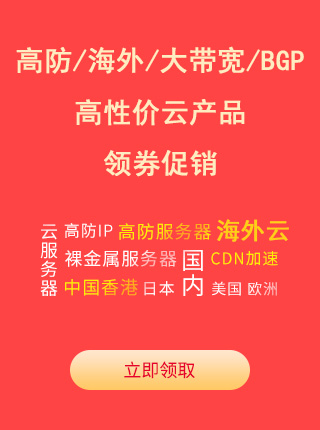python线程安全队列的实现代码是什么
Admin 2022-08-19 群英技术资讯 766 次浏览
 这篇文章给大家分享的是python线程安全队列的实现代码是什么。小编觉得挺实用的,因此分享给大家做个参考,文中的介绍得很详细,而要易于理解和学习,有需要的朋友可以参考,接下来就跟随小编一起了解看看吧。
这篇文章给大家分享的是python线程安全队列的实现代码是什么。小编觉得挺实用的,因此分享给大家做个参考,文中的介绍得很详细,而要易于理解和学习,有需要的朋友可以参考,接下来就跟随小编一起了解看看吧。本文实例为大家分享了Python实现线程池之线程安全队列的具体代码,供大家参考,具体内容如下
一、线程池组成
一个完整的线程池由下面几部分组成,线程安全队列、任务对象、线程处理对象、线程池对象。其中一个线程安全的队列是实现线程池和任务队列的基础,本节我们通过threading包中的互斥量threading.Lock()和条件变量threading.Condition()来实现一个简单的、读取安全的线程队列。

二、线程安全队列的实现
包括put、pop、get等方法,为保证线程安全,读写操作时要添加互斥锁;并且pop操作可以设置等待时间以阻塞当前获取元素的线程,当新元素写入队列时通过条件变量通知解除等待操作。
class ThreadSafeQueue(object): def __init__(self, max_size=0): self.queue = [] self.max_size = max_size # max_size为0表示无限大 self.lock = threading.Lock() # 互斥量 self.condition = threading.Condition() # 条件变量 def size(self): """ 获取当前队列的大小 :return: 队列长度 """ # 加锁 self.lock.acquire() size = len(self.queue) self.lock.release() return size def put(self, item): """ 将单个元素放入队列 :param item: :return: """ # 队列已满 max_size为0表示无限大 if self.max_size != 0 and self.size() >= self.max_size: return ThreadSafeException() # 加锁 self.lock.acquire() self.queue.append(item) self.lock.release() self.condition.acquire() # 通知等待读取的线程 self.condition.notify() self.condition.release() return item def batch_put(self, item_list): """ 批量添加元素 :param item_list: :return: """ if not isinstance(item_list, list): item_list = list(item_list) res = [self.put(item) for item in item_list] return res def pop(self, block=False, timeout=0): """ 从队列头部取出元素 :param block: 是否阻塞线程 :param timeout: 等待时间 :return: """ if self.size() == 0: if block: self.condition.acquire() self.condition.wait(timeout) self.condition.release() else: return None # 加锁 self.lock.acquire() item = None if len(self.queue): item = self.queue.pop() self.lock.release() return item def get(self, index): """ 获取指定位置的元素 :param index: :return: """ if self.size() == 0 or index >= self.size(): return None # 加锁 self.lock.acquire() item = self.queue[index] self.lock.release() return item class ThreadSafeException(Exception): pass
三、测试逻辑
3.1、测试阻塞逻辑
def thread_queue_test_1():
thread_queue = ThreadSafeQueue(10)
def producer():
while True:
thread_queue.put(random.randint(0, 10))
time.sleep(2)
def consumer():
while True:
print('current time before pop is %d' % time.time())
item = thread_queue.pop(block=True, timeout=3)
# item = thread_queue.get(2)
if item is not None:
print('get value from queue is %s' % item)
else:
print(item)
print('current time after pop is %d' % time.time())
t1 = threading.Thread(target=producer)
t2 = threading.Thread(target=consumer)
t1.start()
t2.start()
t1.join()
t2.join()
测试结果:
我们可以看到生产者线程每隔2s向队列写入一个元素,消费者线程当无数据时默认阻塞3s。通过执行时间发现消费者线程确实发生了阻塞,当生产者写入数据时结束当前等待操作。

3.2、测试读写加锁逻辑
def thread_queue_test_2():
thread_queue = ThreadSafeQueue(10)
def producer():
while True:
thread_queue.put(random.randint(0, 10))
time.sleep(2)
def consumer(name):
while True:
item = thread_queue.pop(block=True, timeout=1)
# item = thread_queue.get(2)
if item is not None:
print('%s get value from queue is %s' % (name, item))
else:
print('%s get value from queue is None' % name)
t1 = threading.Thread(target=producer)
t2 = threading.Thread(target=consumer, args=('thread1',))
t3 = threading.Thread(target=consumer, args=('thread2',))
t1.start()
t2.start()
t3.start()
t1.join()
t2.join()
t3.join()
测试结果:
生产者还是每2s生成一个元素写入队列,消费者开启两个线程进行消费,默认阻塞时间为1s,打印结果显示通过加锁确保每次只有一个线程能获取数据,保证了线程读写的安全。

到此这篇关于“python线程安全队列的实现代码是什么”的文章就介绍到这了,更多相关内容请搜索群英网络以前的文章或继续浏览下面的相关文章,希望大家以后多多支持群英网络!

免责声明:本站发布的内容(图片、视频和文字)以原创、转载和分享为主,文章观点不代表本网站立场,如果涉及侵权请联系站长邮箱:mmqy2019@163.com进行举报,并提供相关证据,查实之后,将立刻删除涉嫌侵权内容。
猜你喜欢
-
如何利用Python数据可视化画火山图,代码是什么
这篇文章主要为大家介绍了python数据可视化绘制火山图示例详解,有需要的朋友可以借鉴参考下,希望能够有所帮助,祝大家多多进步,早日升职加薪
-
基于Python怎样实现冒泡排序,代码是什么
冒泡排序(Bubble Sort)是一种简单的排序算法。它重复地遍历要排序的数列,一次比较两个元素,如果他们的顺序错误就把他们交换过来。遍历数列的工作是重复地进行直到没有再需要交换,也就是说该数列已经排序完成。这个算法的名字由来是因为越小的元素会经由交换慢慢“浮”到数列的顶端。
-
pyecharts如何实现数据可视化,怎样画常见图表案
这篇文章主要介绍了pyecharts绘制各种数据可视化图表案例并附效果和代码,文章围绕主题展开详细的内容介绍,感兴趣的小伙伴可以参考一下
-
python字符串的基础知识和操作是什么.
字符串是 Python 中最常用的数据类型。我们一般使用引号来创建字符串。创建字符串很简单,只要为变量分配一个值即可。
-
用Python打印数据类型的方法及代码是什么
这篇文章主要介绍了Python打印数据类型的全过程,具有很好的参考价值,希望对大家有所帮助。如有错误或未考虑完全的地方,望不吝赐教
成为群英会员,开启智能安全云计算之旅
立即注册Copyright © QY Network Company Ltd. All Rights Reserved. 2003-2020 群英 版权所有
增值电信经营许可证 : B1.B2-20140078 粤ICP备09006778号 域名注册商资质 粤 D3.1-20240008





